Planting for Pollinators
The ARS Bee Research Lab in Beltsville, Maryland, maintains a Pollinator Garden, which is an educational tool showing a real-life example of the codependent nature of our food ecosystem and the value pollinators provide to it. Pollinators, such as honey bees, collect nectar and pollen from flowers, and they in turn provide flowers a means to reproduce by spreading pollen from one flower to the next in a process called pollination. As a result, plants produce fruit and continue their lifecycle and consumers reap the rewards with fresh produce. – By Peggy Greb, ARS Office of Communications.

This line drawing of a honey bee in the Pollinator Garden was made with a spade. Pollinating plants will be placed in the lines of the bee. (Peggy Greb, D3869-1)
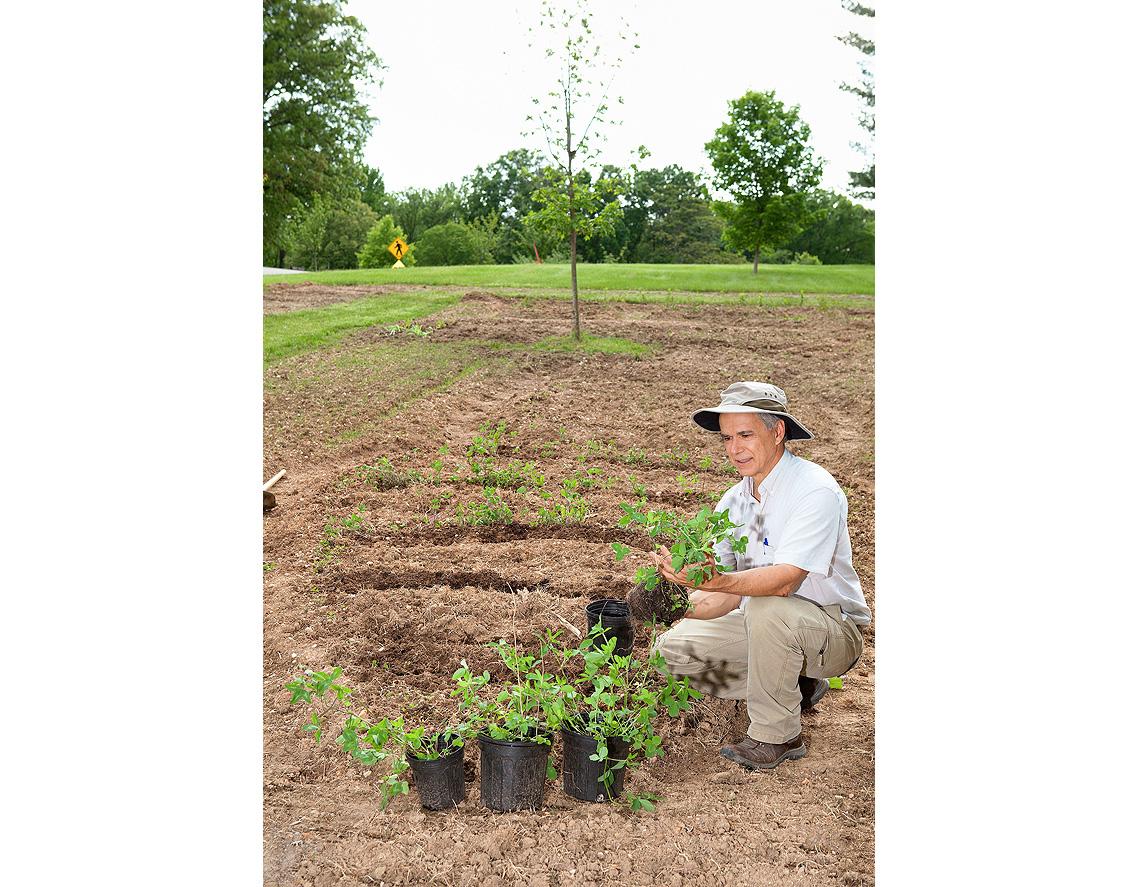
ORISE fellow Francisco Posada plants red clover, a perennial legume, in the lines drawn of the oval-shaped honey bee body in the Pollinator Garden. A perennial plant lives for more than 2 years. (Peggy Greb, D3869-2)
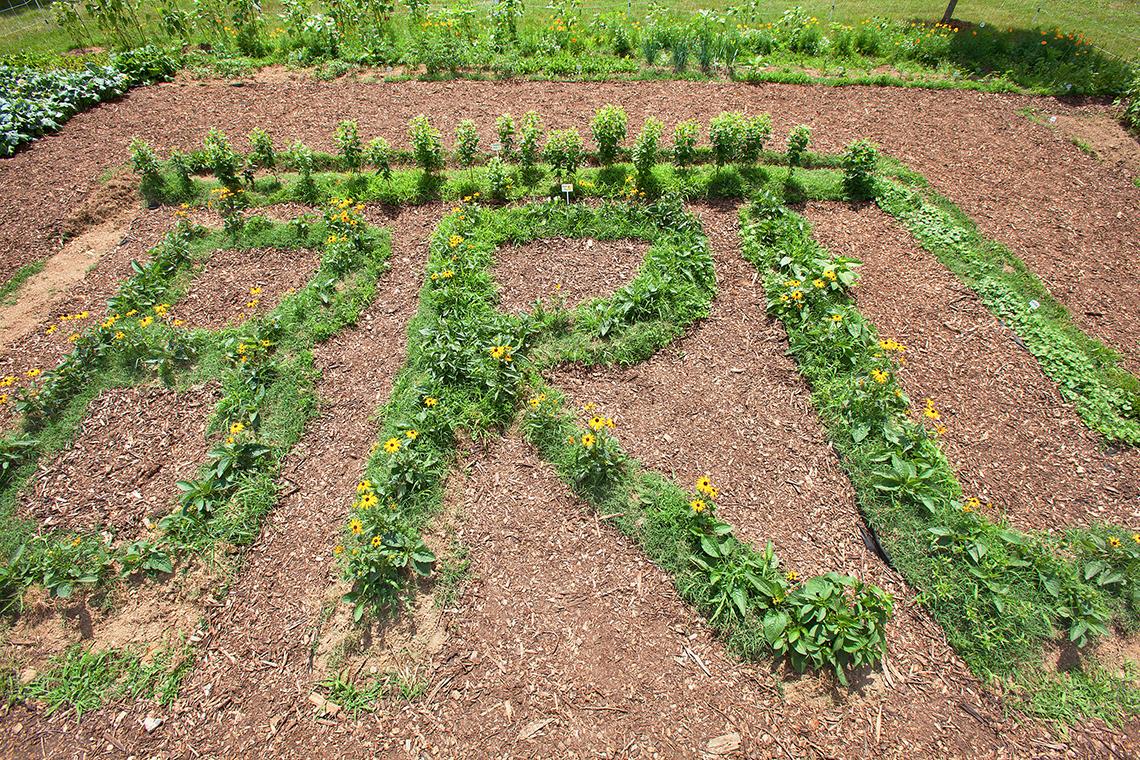
On the upper side of the Pollinator Garden, mountain mint and black-eyed Susan plants grow in the BRL letters representing the Bee Research Lab. (Peggy Greb, D3966-1)
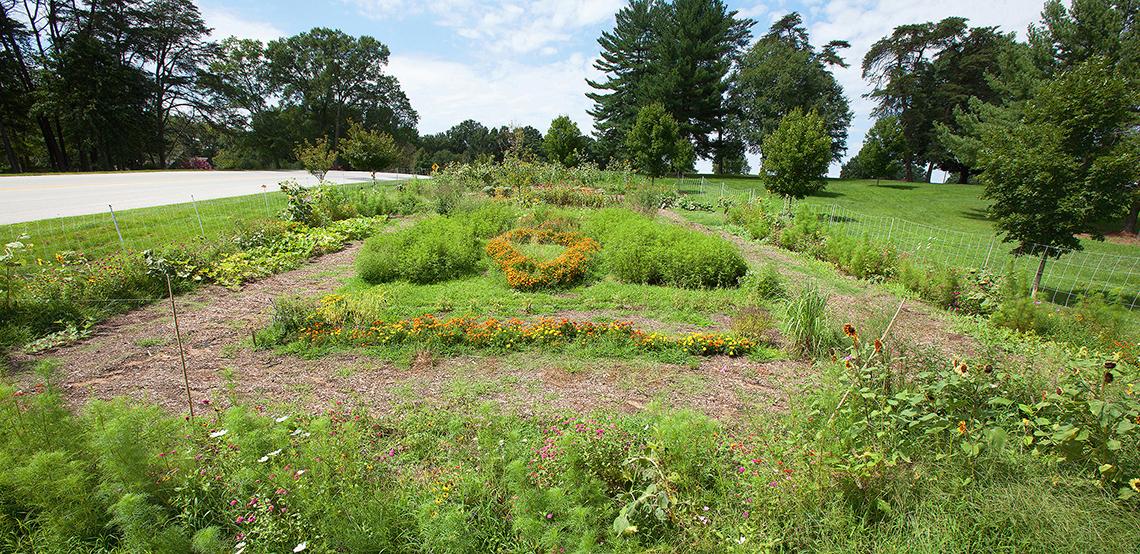
Maturing plants flower in the Pollinator Garden. The garden offers a diverse habitat for native bees and other pollinators, such as butterflies. (Peggy Greb, D4122-1)
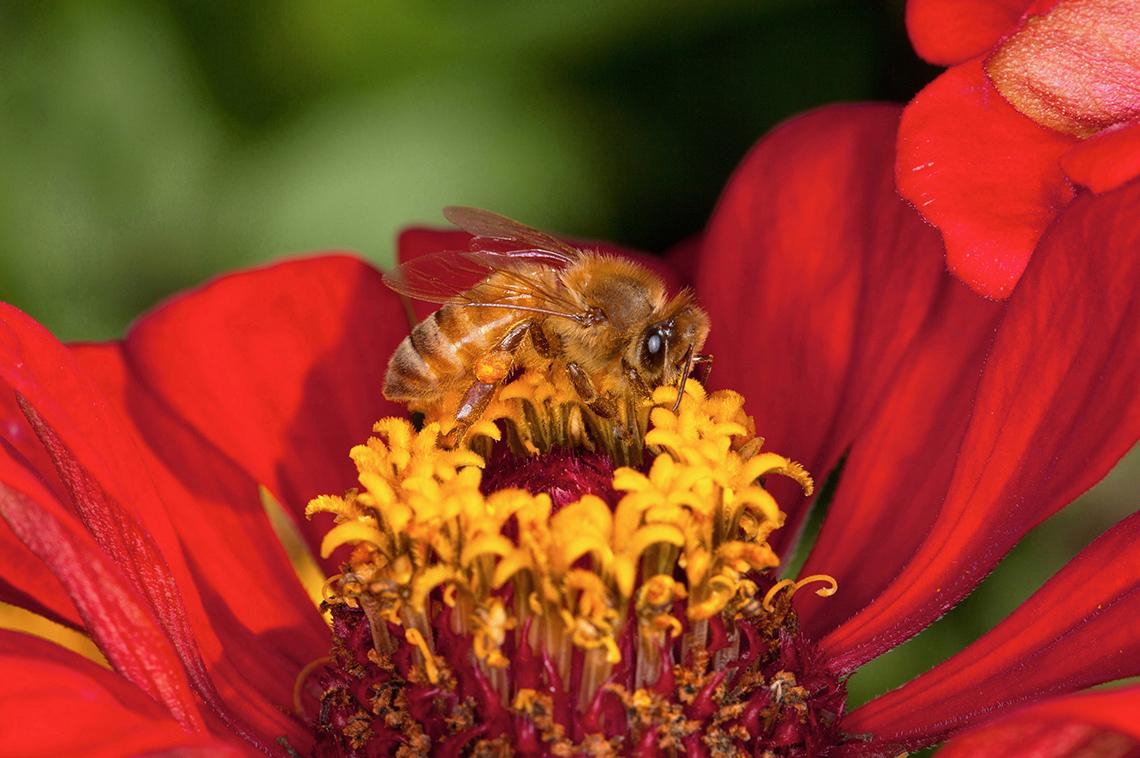
As a honey bee, Apis mellifera, moves from flower to flower feeding on nectar, she is dusted with pollen from anthers (the male part of the flower), which adheres to the hairs of her body. The pollen also falls off her body and transfers to the pistil (female part of the flower), where it germinates and grows a pollen tube that reaches the ovary of the flower and fertilizes it. (Peggy Greb, D4114-1)

In the Pollinator Garden, ORISE fellow Francisco Posada adds mulch to black-eyed Susan flowers, Rudbeckia hirta. This summer-long plant is widely used in parks and gardens. (Peggy Greb, D3961-1)
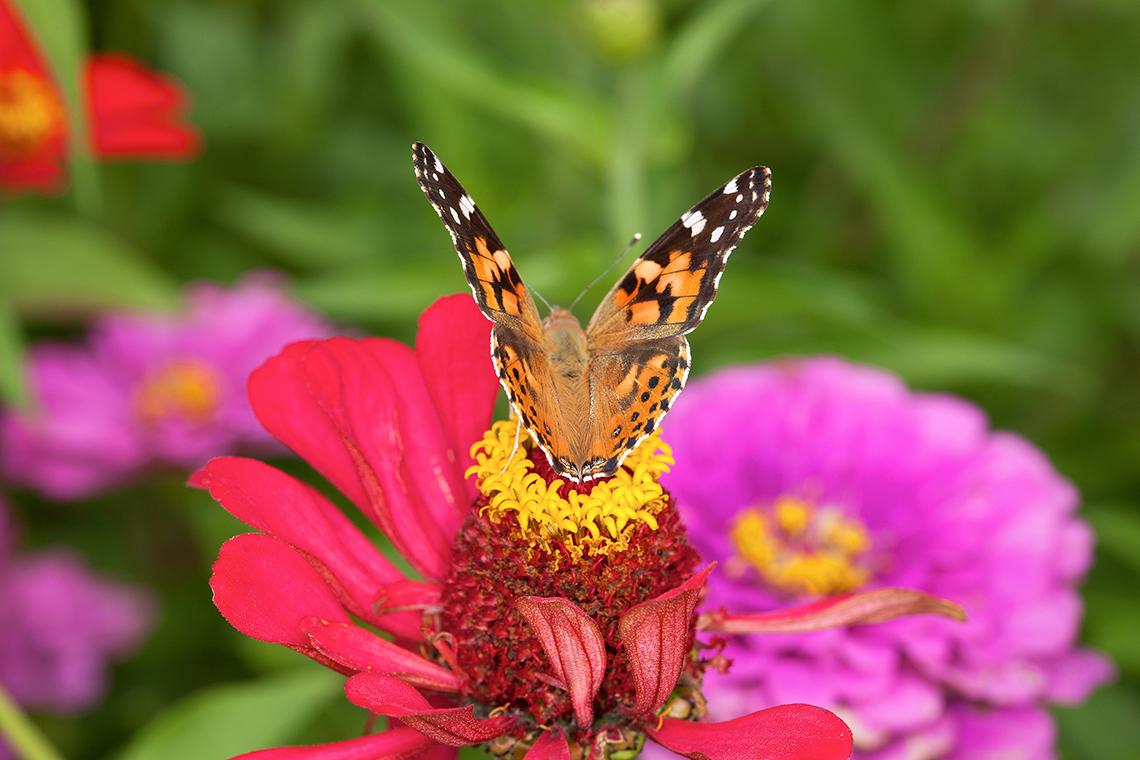
An American lady butterfly, Vanessa virginiensis, sits on the crown of a zinnia flower. The butterfly is found throughout North America. (Peggy Greb, D3968-1)
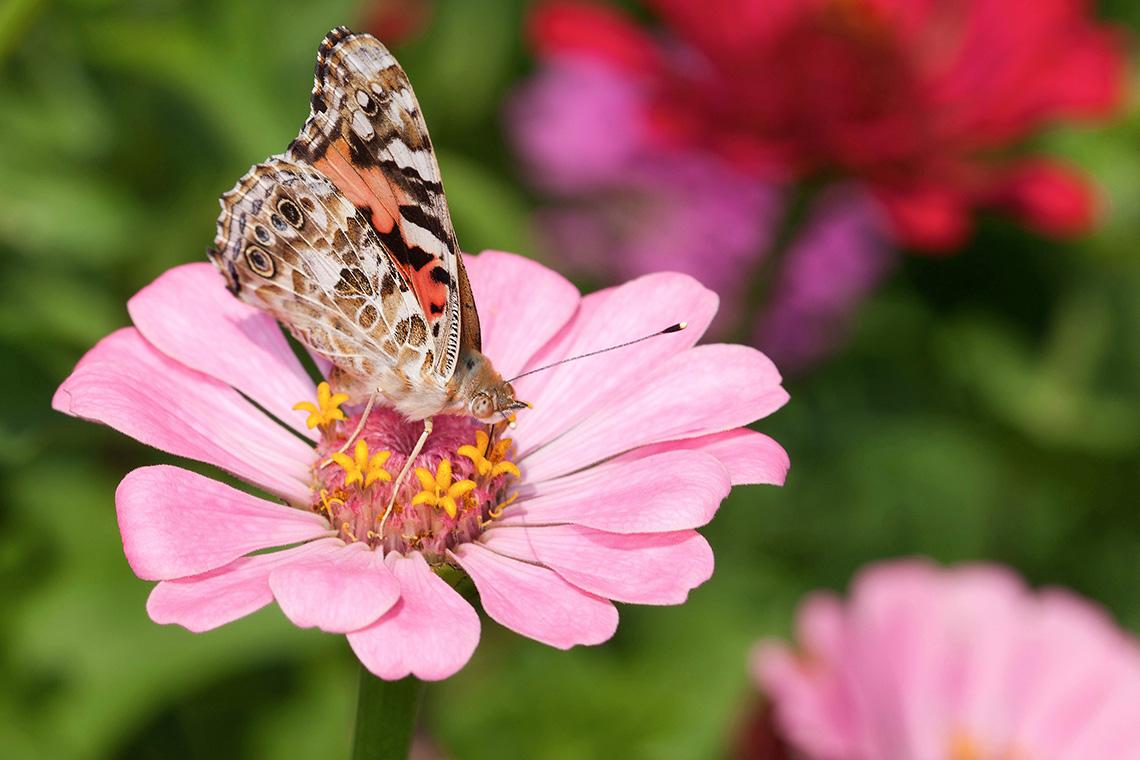
An American lady butterfly, Vanessa virginiensis, feeds on the nectar of a zinnia flower, showing its underside, or ventral, pattern. This pattern is very different than the butterfly’s dorsal pattern, shown in the previous photograph. The ventral side of butterflies is often used for camouflage to avoid predators. (Peggy Greb, D3954-2)

ORISE fellow Francisco Posada examines zinnia flowers in the Pollinator Garden. Zinnias are annuals, so they grow for one season and produce seeds, but the original plant does not come back in subsequent years. Francisco harvests seeds from dried zinnia flowers for planting the next year. (Peggy Greb, D3960-1)
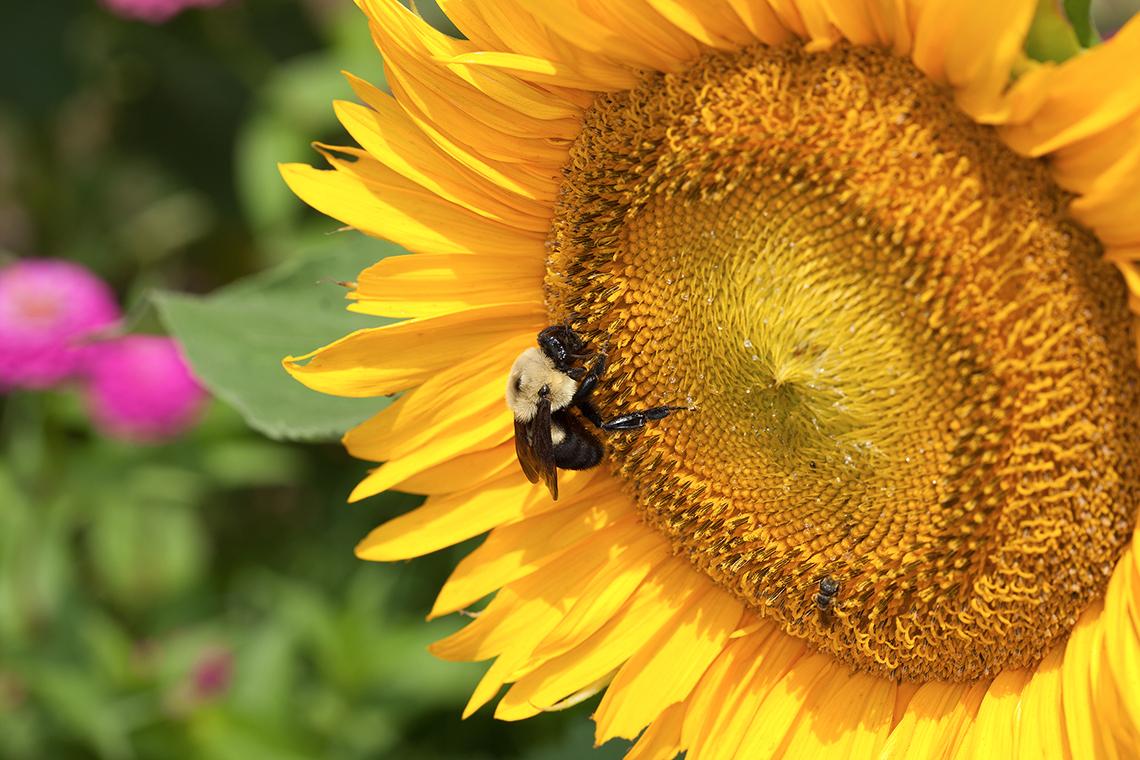
A common eastern bumble bee, Bombus impatiens, feeds on sunflower nectar. The large flower is easily seen by insects and birds, which pollinate it. It produces thousands of seeds, which people consume as a snack or in salad. Seeds are also made into sunflower butter or sunflower oil. (Peggy Greb, D3973-1)
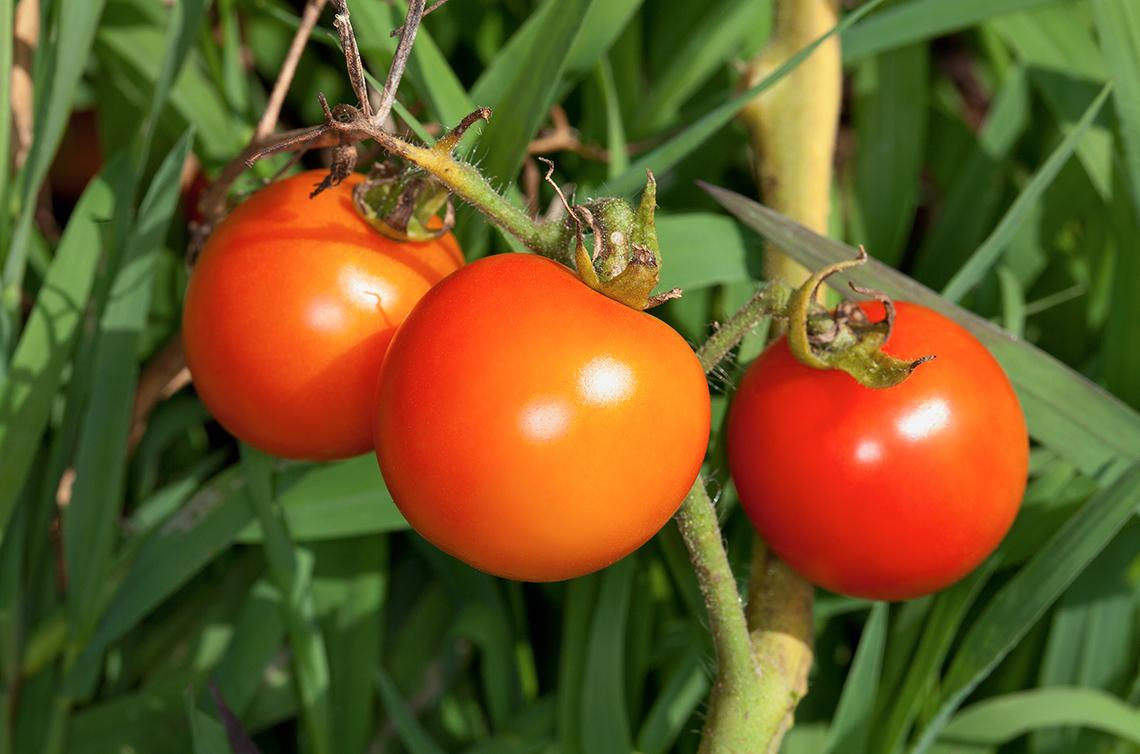
When flowering, cherry tomato plants are pollinated by bumble bees and other pollinators. (Peggy Greb, D4125-1)
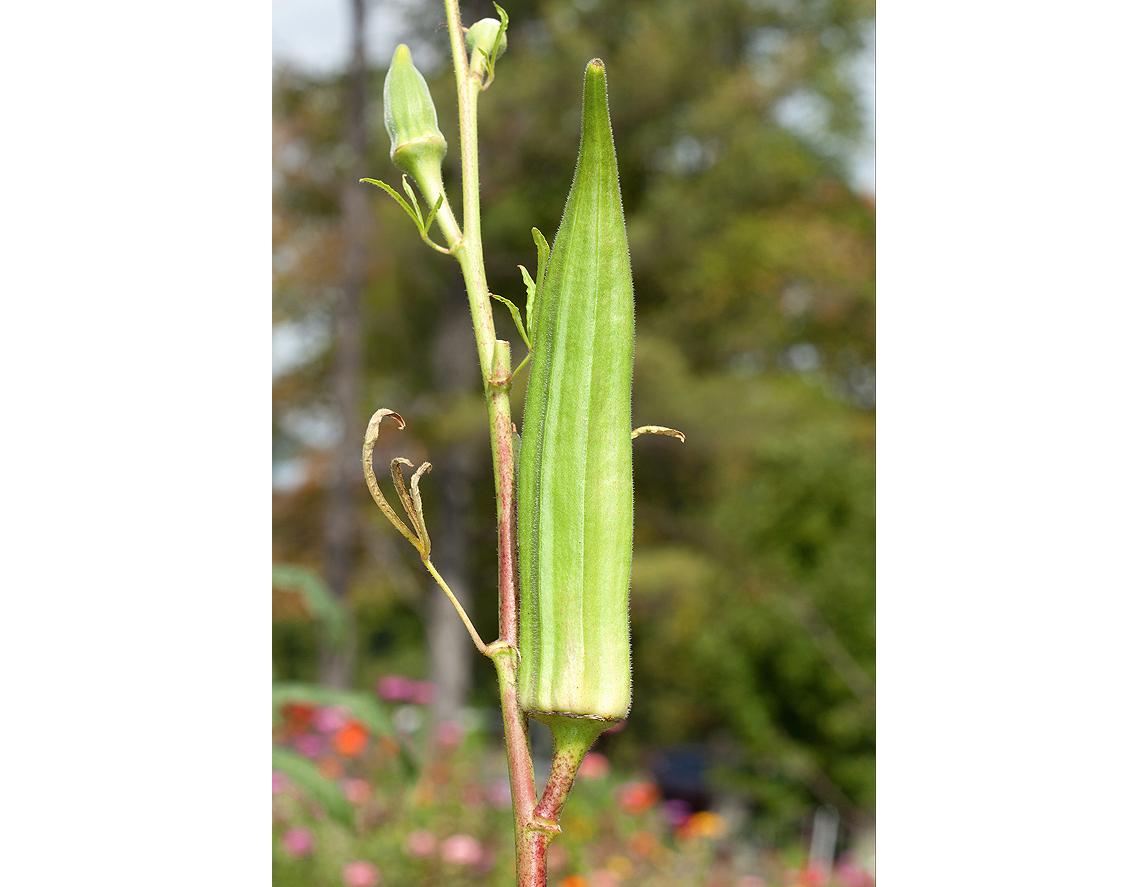
Okra plants are pollinated by butterflies and hover flies when flowering and attract a diverse group of pollinators to the garden. The pods (shown here), seeds, and leaves of this tall plant are all edible. (Peggy Greb, D4137-1)

This hover fly, mimicking a honey bee, feeds on a zinnia flower. Hover flies, despite their mimicry of more dangerous wasps and bees to ward off predators, are harmless to most animals. There are about 6,000 species of hover flies. (Peggy Greb, D3974-1)
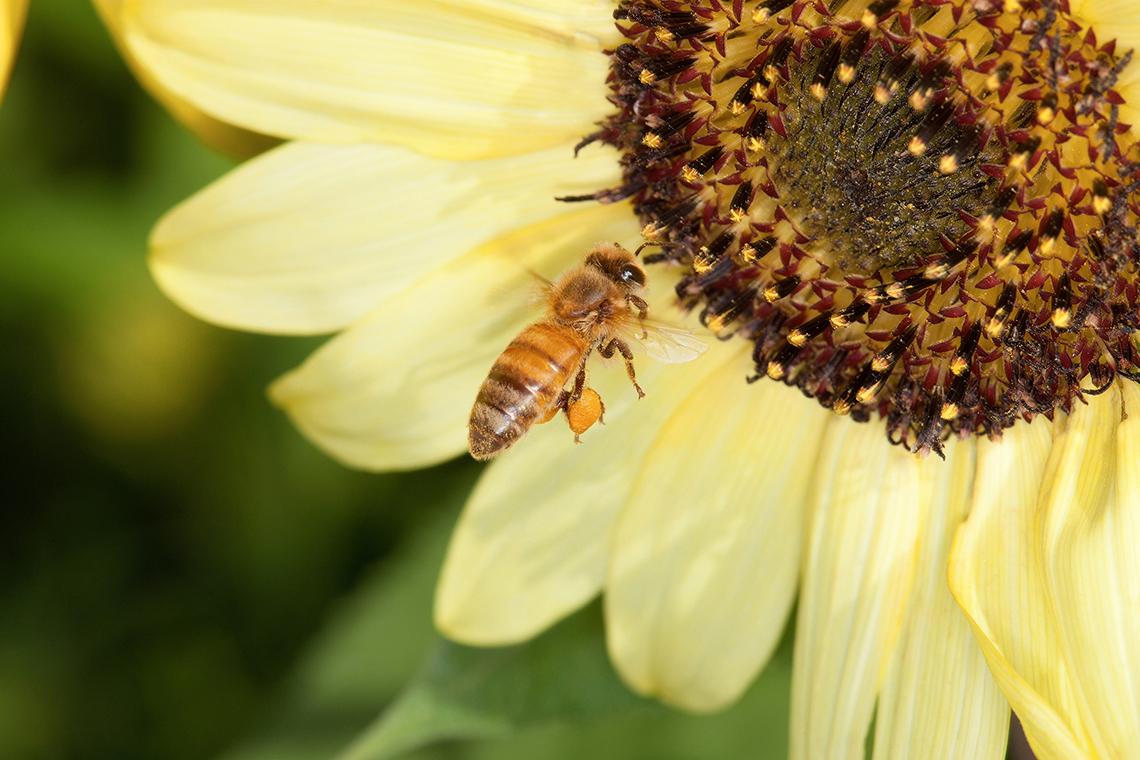
A honey bee, Apis mellifera, buzzes around a sunflower. You can see the buildup of pollen on her rear leg, in what is called a pollen basket. This is how she stores pollen. When she brings the pollen back to the hive, the house bees press the pollen and make bee bread, which is the protein used to feed the nurse bee and immature bees. (Peggy Greb, D4026-1)
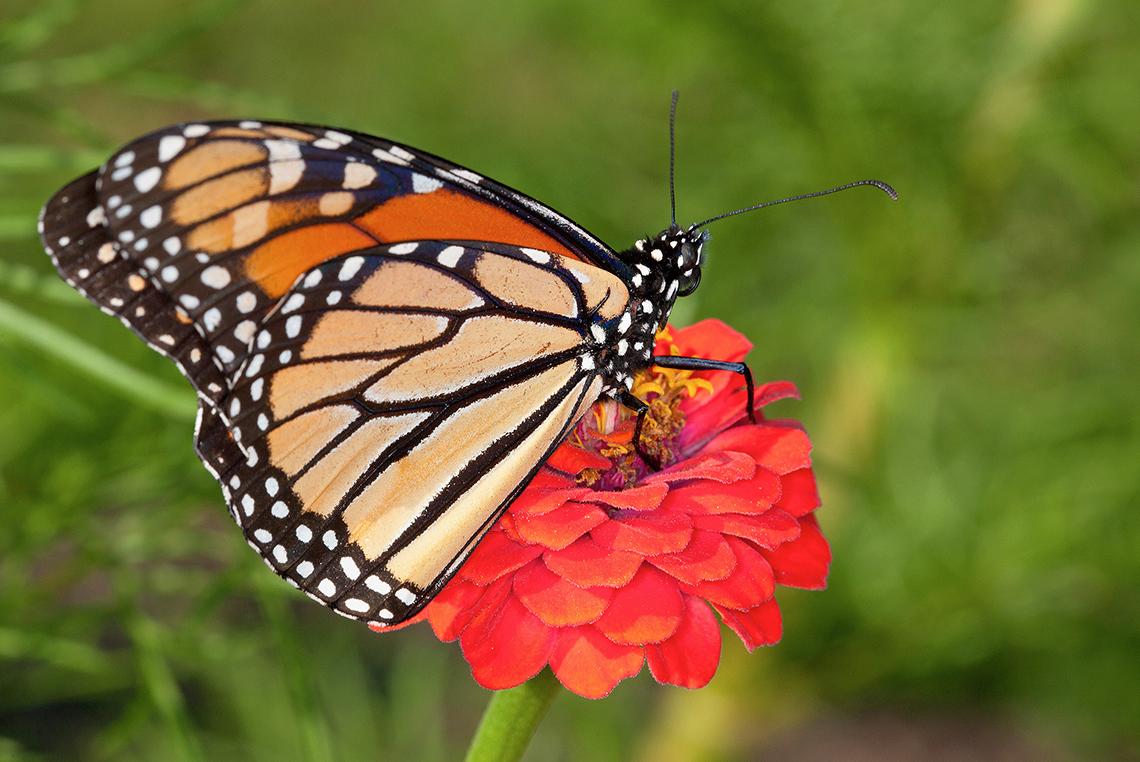
A monarch butterfly, Danaus plexippus, lands on a red zinnia flower. As the butterfly moves from flower to flower, feeding on nectar, pollen sticks to its body and is transferred to successive flowers, in the same manner that it does for honey bees. Unlike honey bees, butterflies don’t have a basket to store pollen, and their long legs keep them farther away from the pollen on the flower, so there is less pollen pickup on their body. (Peggy Greb, D3980-1)

A black swallowtail butterfly sits on top of a zinnia flower. There are over 550 swallowtail species. (Peggy Greb, D3952-3)
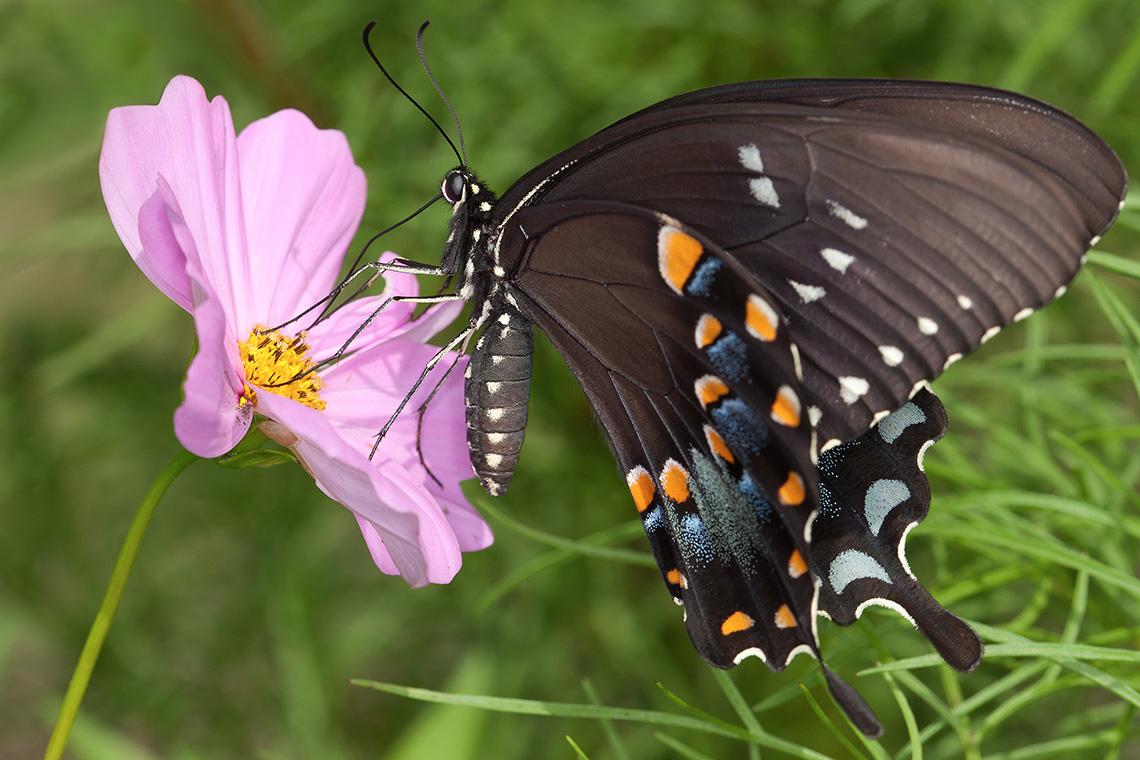
A black swallowtail butterfly feeds on a pink cosmos flower. You can see the tongue or proboscis dipping inside the flower, as the butterfly reaches for the nectar at the flower base. Like most pollinators, the proboscis is a tube which functions like a straw as the butterfly sucks nectar from the flower. (Peggy Greb, D3969-1)

The skipper butterfly is characterized by a stocky body and a typically quick, darting flight habit, which is the source of its name. There are 3,500 species of skipper butterflies. (Peggy Greb, D4031-1)
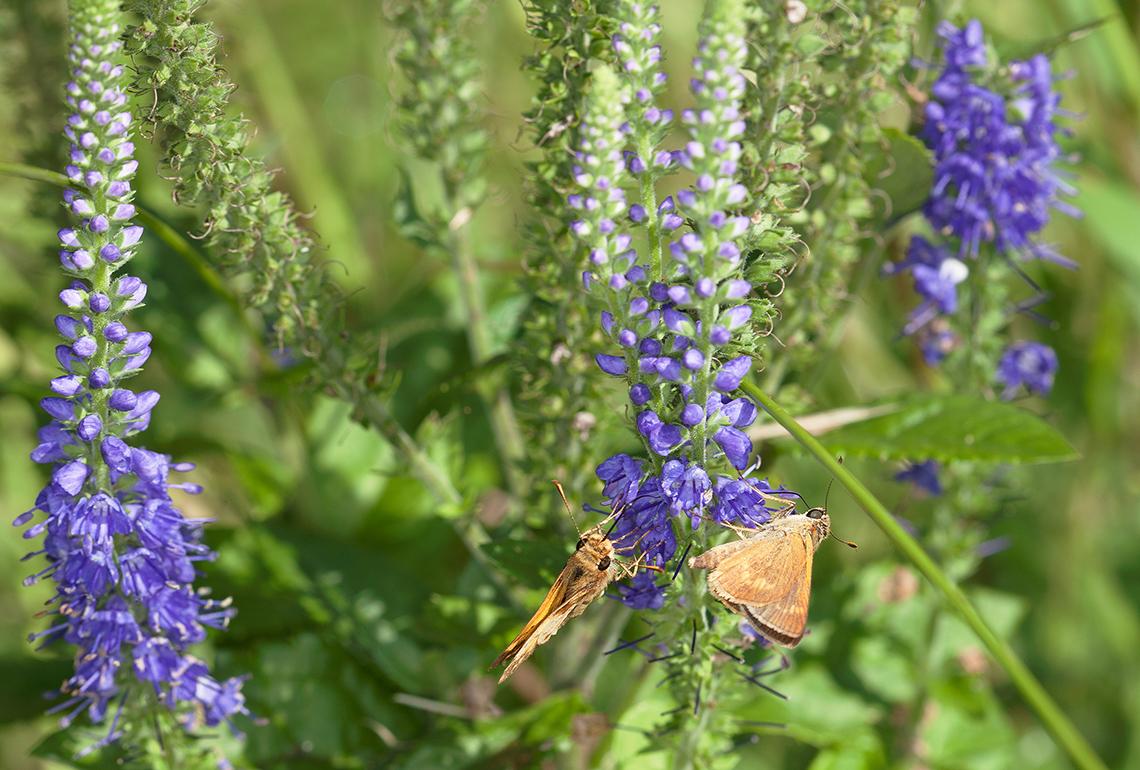
Skipper butterflies feed on delphinium flowers. This cone-shaped flower is a perennial plant. (Peggy Greb, D4030-1)
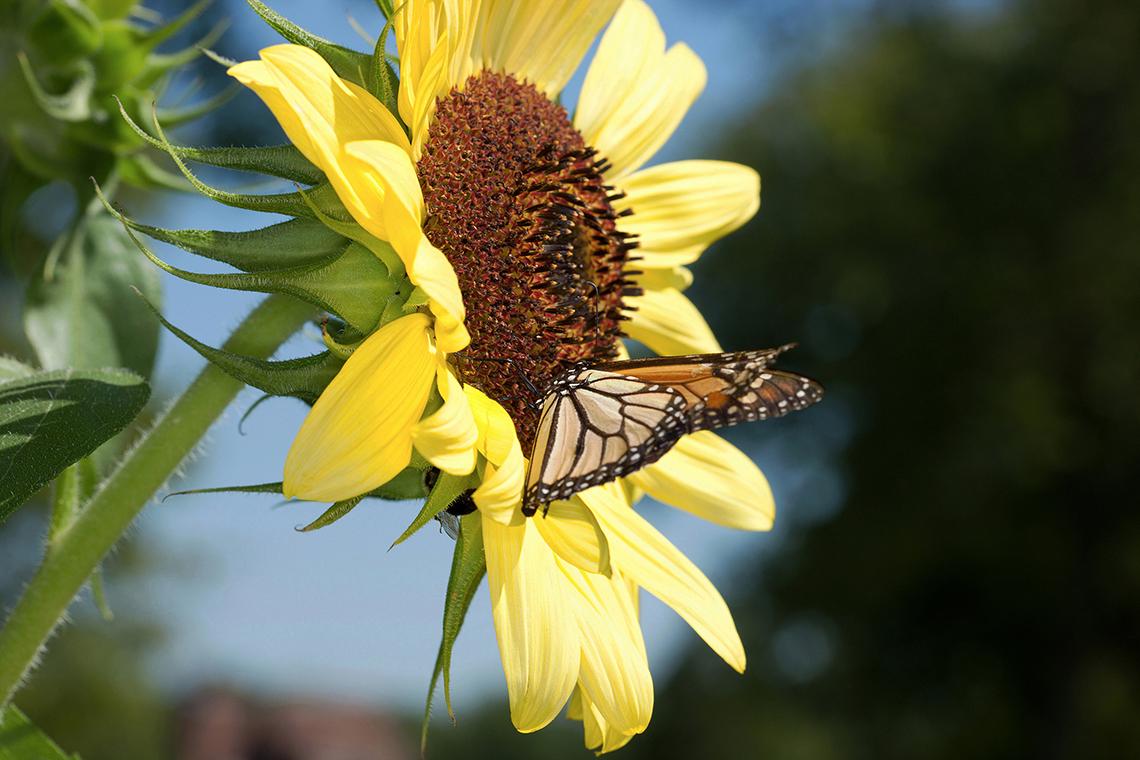
A monarch butterfly, Danaus plexippus, feeds on sunflower nectar. Monarchs are poisonous to their predators, such as birds, because as caterpillars they ingest large amounts of Asclepias plants, primarily milkweed, which contain steroids that act in heart-arresting ways. The steroids remain and are redistributed when a caterpillar turns into a butterfly. (Peggy Greb, D4027-1)

A silver-spotted skipper butterfly, Epargyreus clarus, lands on a zinnia flower. (Peggy Greb, D3981-1)
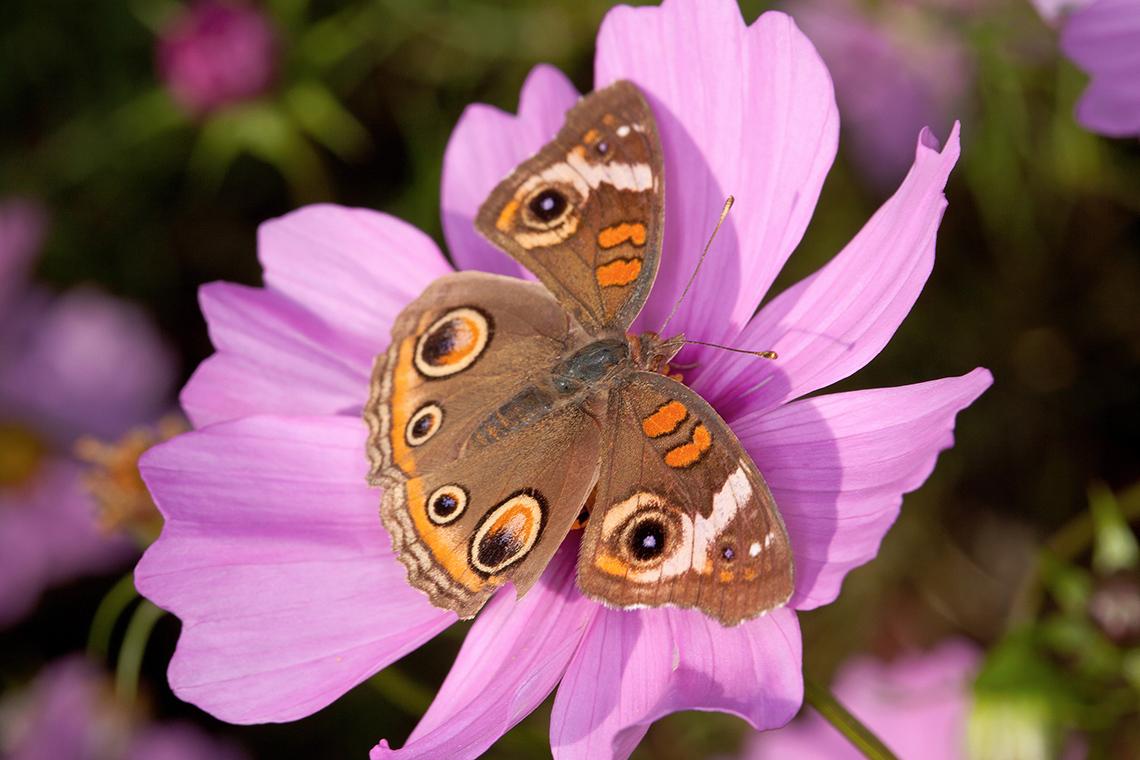
A buckeye butterfly, Junonia coenia, feeds on a cosmos flower. The butterfly name is derived from the colorful eyelike markings on each of the wings. Its original ancestry has been traced to Africa. (Peggy Greb, D4153-1)

Two swallowtail butterflies land on zinnia flowers. (Peggy Greb, D3950-4)
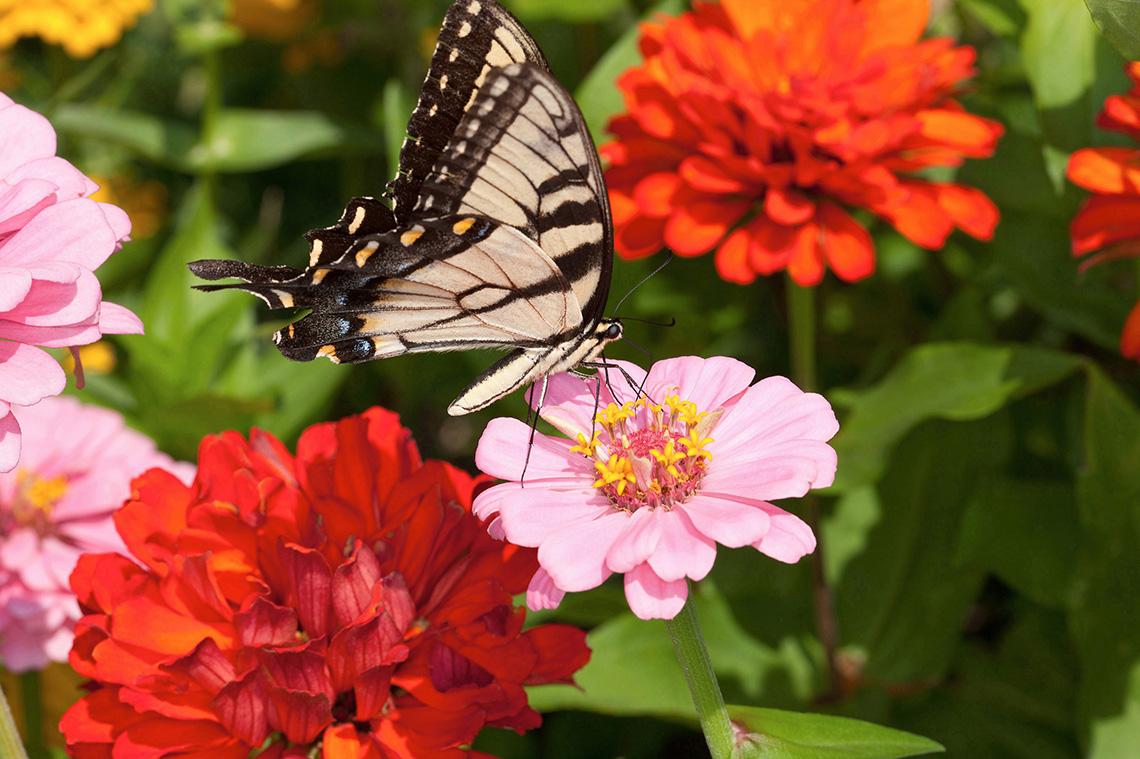
A swallowtail butterfly feeds on a zinnia flower. Most of the swallowtail butterflies have tails on their hind wings, which resemble the tails of the swallow family of birds. (Peggy Greb, D3950-7)

An eastern carpenter bee, Xylocopa virginica, feeds on a mountain mint flower, which is a pollinator magnet due to its profusion of tiny blossoms. It usually blooms late June through August and attracts an assortment of pollinators. (Peggy Greb, D3979-1)

A cloudless sulphur butterfly, Phoebis sennae, feeds on sunflower nectar. Its genus name is derived from Phoebe, the sister of Apollo, a god of Greek and Roman mythology, and sennae is for the genus Senna, to which many of the cloudless sulphur’s larval host plants belong. (Peggy Greb, D4028-1)
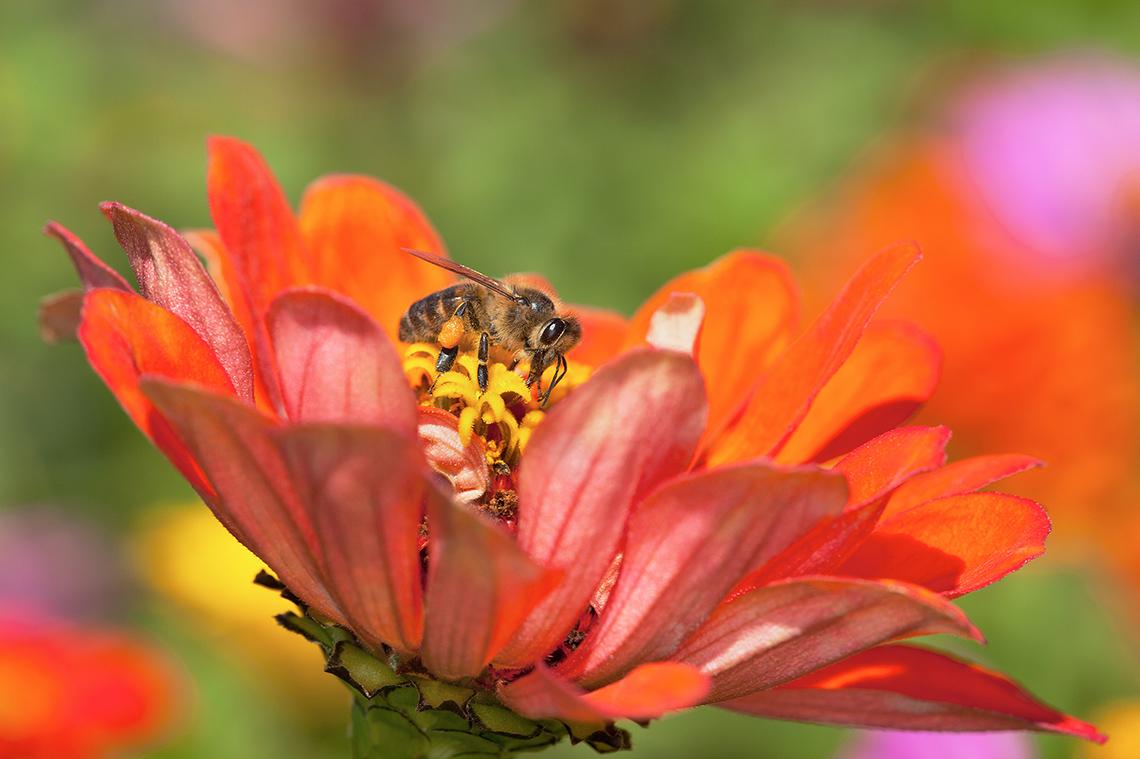
As a honey bee, Apis mellifera, feeds on a zinnia flower, the nectar is stored in a honey sac, which is separate from its digestive stomach, until she returns to the hive. When it is full, the honey sac weighs about one third the weight of the entire bee. After she delivers the nectar to an in-hive worker bee, the long process of converting it into honey, the bees’ food, begins. (Peggy Greb, D4115-1)
You May Also Like


